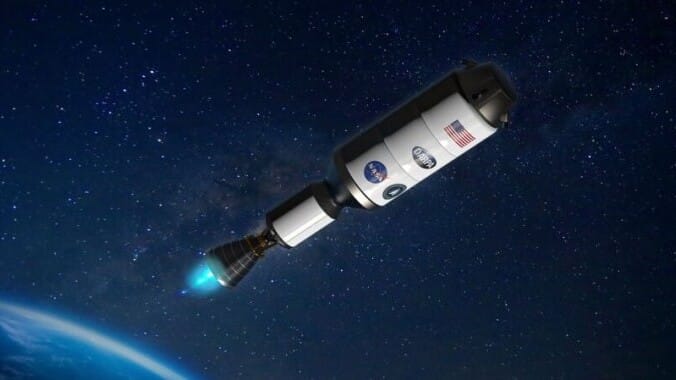
NASA's upcoming nuclear spaceships might take us to Mars
What's the story
On June 26, 1968, the most powerful nuclear rocket engine ever built, the Phoebus 2A, was tested in the US. This test lasted for 750 seconds and demonstrated that the reactor could potentially transport humans to Mars. However, due to its enormous size and cost, along with then-President Nixon's limited vision for space exploration, this project never materialized. Now, the US military and NASA are building engines akin to Phoebus 2A once again to be used in spaceships.
Specs
A look at the new project
DARPA and NASA are working on an NTR project called Demonstration Rocket for Agile Cislunar Operations (DRACO). It will use a new fuel known as high-assay-low-enriched uranium (HALEU) for propulsion. This spacecraft should weigh more than 600 tons, and might make its way to Mars in 297 days, as per the researchers. A timeline for its tests has not been disclosed.
Defence
The military's role in nuclear propulsion development
Contrary to popular belief, it was not NASA but the military that initially championed rockets with nuclear engines. The military saw potential in these engines for intercontinental ballistic missiles (ICBMs), sparking a renewed interest in this technology. This work on nuclear thermal rockets (NTRs) began as early as the mid-1950s with the Rover program, initiated by the US Air Force.
NTR mechanics
The science behind nuclear thermal rockets
The concept behind NTRs involves using turbopumps to feed liquid hydrogen through a nuclear reactor core. This process heats the hydrogen to extremely high temperatures before it is expelled through a nozzle, generating thrust. Unlike chemical rockets that require combustion in a chamber, NTRs heat gas by bringing it into direct contact with a nuclear reactor, leading to greater fuel efficiency.
Fuel efficiency
The efficiency advantage
The primary advantage of NTRs is their fuel efficiency. The "specific impulse," which can be likened to a rocket's gas mileage, is calculated from the square root of the exhaust gas temperature, divided by the molecular weight of the propellant. As hydrogen has the lowest molecular weight, it is the most efficient propellant for rockets. Unlike chemical rockets that require an oxidizer for combustion, increasing total molecular weight, NTRs can operate with pure hydrogen, making them twice as efficient.
Technical hurdles
Challenges in transitioning to nuclear rockets
Transitioning from stationary reactors on Earth to flying reactors presents significant challenges. For instance, nuclear thermal rockets (NTRs) need the core to operate at temperatures reaching 3,000 K—around 1,800 K higher than ground-based reactors. Manufacturing fuel rods that can withstand such temperatures has proven extremely difficult. Also, hydrogen is highly corrosive at these temperatures, especially when interacting with the few materials stable at 3,000 K.
Issues
The control rod challenge
Another significant challenge in the development of nuclear thermal rockets (NTRs) is the use of control rods. In standard reactors on Earth, these rods are gravitationally dropped into the core to moderate the reactor's activity—a method that wouldn't work in flight. This issue presents a unique problem for engineers and scientists working on NTR technology, further complicating its implementation.